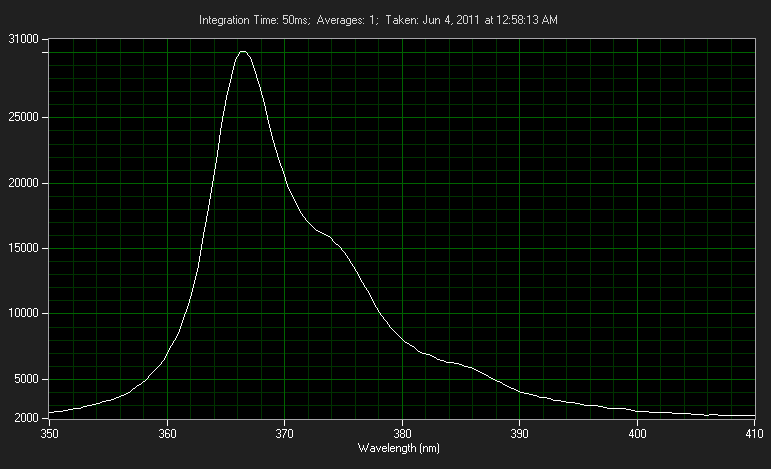Thanks for all the feedback. Just doing a little more research, it looks as if 365nm laser diodes do exist, but only in the research lab. No indication of any in commercial production. The ones at 355 and 375 seem to cost thousands regardless of how few mW they produce.
As for the industry standard, that's really what I'm trying to get away from. Right now the diamond industry is doing the same thing as the banking and mortgage industries before the recent financial meltdown. In 2005 the GIA (Gemological Institute of America) stopped filtering the UV from their grading lamps. Within a year all other major grading labs followed suit. The result is that 1/3 of all diamonds are now over-graded by up to 4 letter grades. That means the diamonds are overvalued by about 40%.
On the other side of the coin, there's a worldwide movement to try to do something about it. Before 2005 fluorescence didn't matter much, since it had little effect on price, so no one paid attention to it. Since then people have taken a closer look at how diamond fluorescence is measured and found that the industry standard leaves much to be desired. They use 9v fluorescent tubes with moderately-priced and inadequate filters. Independent studies have shown that even diamonds with moderate fluorescence are being graded as "faint," "negligible," or "none."
The laser idea is just an experiment. For example, a 1 mW or even 0.1 mW 365nm laser with a good bandpass filter might allow me to see, and perhaps measure, fluorescence that's slipping past the grading labs.
When I said I needed something powerful, I what I meant was just a lot of uv photons striking the diamond. For that I would like a laser. However, the laser itself could be extremely weak as far as lasers go, and still be "powerful" as far as the diamond is concerned. The main thing is a narrow beam so as not to illuminate the surroundings, and a narrow bandwidth.






